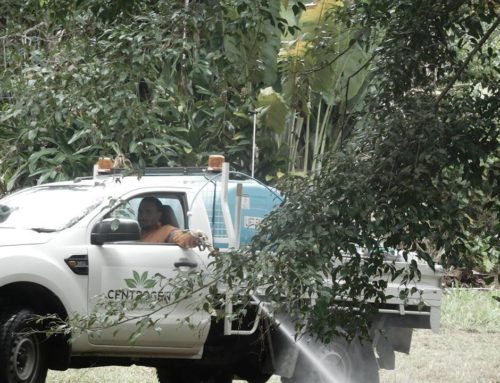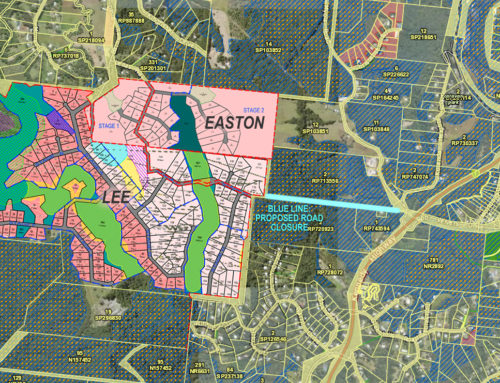Date: 2 February 2017
Submitted by: Ingrid Marker, Cassowary Keystone Conservation
Lord Howe Island, World Heritage Area, NSW
A World Heritage Area in NSW that has enacted strict quarantine restrictions to protect its unique flora and fauna. These restrictions are controlled by the Lord Howe Island Board who has developed a “Dog Importation and Management Policy” that only allows residents and leaseholders who have lived on the Island for over two years to own one de-sexed dog per household. The Lord Howe Island Board has the right to seize, remove or destroy an animal that is imported onto the Island illegally. Cats are not permitted on the island due to their impact on wildlife.
http://www.dpi.nsw.gov.au/__data/assets/pdf_file/0019/303634/Visiting-lord-howe-island-restrictions-on-plants-animals-and-other-things.pdf
Mornington Peninsula National Park, Victoria
From November 2016, dogs will be banned from the entire coastline of Mornington Peninsula National Park to protect a key breeding ground of the threatened hooded plover. Dog walking is currently permitted in 14.5 kilometres of the 42-kilometre national park coastline and the ban follows failed efforts to mitigate the impact of dogs on the hooded plover population.The ban has been endorsed by State Environment Minister Lisa Neville who stated”The evidence shows that dogs and hooded plovers don’t mix. This ban is the right decision to protect a vulnerable and threatened species”. It also won bipartisan support with local Liberal Party state MP for Nepean, Martin Dixon saying the ban was a “great outcome”.He said the total ban will make it so much easier for rangers to enforce rather than having complex rules of when you can walk your dog”.
http://www.theage.com.au/victoria/dog-ban-at-mornington-peninsula-national-park-gives-plover-lovers-cover-to-breed-20160311gngb9m.html?utm_content=buffer71a9c&utm_medium=social&utm_source=twitter.com&utm_campaign=buffer#ixzz42qLK8yZz
Tweed Shire Council, NSW
Dog exclusion areas have been designated to protect threatened wildlife. The Koala Beach Estate is a residential development has been designed to minimize impacts on 24 threatened species and ecological communities. Residents actively contribute to the ongoing management of its biodiversity values through a special environmental levy.A Covenant under Section 88B of the Conveyance Act 1919 prohibits domestic dogs and cats being kept or brought onto the Estate and all access roads are sign-posted to that effect. Council rangers police and respond to breaches an after hours reporting number is available. Dog exclusion areas near estuaries have also been implemented under the Coastal Zone Management Plan for the Tweed Coast Estuaries (2013) to address negative impacts of dogs on the regions 250,000 migratory and resident shorebirds, all of which are protected under state and federal legislation and international agreements.
http://www.tweed.nsw.gov.au/KoalaBeach
DCP Section B10 – Koala Beach Estate Document (214kB PDF)
http://www.tweed.nsw.gov.au/Download.aspx?Path=~/Documents/Natural Resource Management/Wildlife/TSC06438_Hastings_Point_Dog_Exclusion_Area_Brochure.pdf
Cat curfews, Australia
Across Australia more than 25 local councils now have some kind of cat curfew, with other local governments also considering introducing cat curfews. The Mornington Peninsula Shire and Yarra Ranges Councils in Victoria have 24-hour curfews to keep cats at home at all times. These restrictions have the support of the RSPCA and a national ’24-hour cat curfew’ has been proposed Australia’s threatened species commissioner, Gregory Andrews, in a bid to protect native animals facing extinction from cat attacks. In 2015 the government sort public support for “24-hour containment requirements for domestic cats, particularly those close to identified conservation areas of significance”.
http://www.smh.com.au/environment/animals/cats-curtailed-as-council-curfews-rein-in-marauding-moggies-20150421-1mpq2l.html#ixzz41dagH8Ij
Fraser Island World Heritage Area, QLD
In 2011 the Fraser Coast Regional Council(FCRC) declared a prohibition of dogs and cats in the Island’s 4 townships with to sunset clause for the four dogs currently living on the Island. (Subordinate Local Law No. 2 (Animal Management) 2011, Schedule 1 Circumstances in which keeping of animal or animals is prohibited (8) the keeping of any dog or cat on Fraser Island). This is to protect wildlife and in particular the Island’s dingo population from disease. This prohibition is deemed effective but FCRC offices being located on the mainland hinder enforcement. Registered assistance dogs (with vaccinations and behavioral training) are an exception to this local law however companion animals prescribed for post-traumatic stress or anxiety disorders are not. Another area of confusion is that owners mistakenly believe that their dog is registered during compulsory micro-chipping process. In addition to this they must also registered with council. Queensland Parks and Wildlife Service (QPWS) enforce the dog and cat prohibition on Fraser Island’sNational Park and Recreational Management Areas. Non-compliance results in a fine and escort from the Island. Dogs access the Island via boat on the western side of the Island with below high water mark being under the authority of the Marine Parks Authority.
FCRC apply higher fines than QPWS,(which are standard across the state) and also enforces compulsory de-sexing across the whole LGA before a dog or cat is sold, given away or registered for the first time.
http://www.frasercoast.qld.gov.au/documents/4362881/41342551/Subordinate%20Local%20Law%20No%202%20%28Animal%20Management%29%202011.pdf
Cairns Regional Council (CRC)
In 2015 CRC undertook an approved inspection program for dog registration in 28 suburbs identified as high dog ownership areas from the council complaints system and Ergon Energy’s database. This door-to-door program found approximately 9000 unregistered dogs of which owners were required to register within a certain time frame before fines applied. The registration fees and fines raised the revenue to pay for the inspection program, which is conducted on average every 2 years. Yearly registration audits which target un-renewed registrations are also undertaken.
Koalas- South-east Queensland
In 2008 a koala crisis sparked the Queensland Government to develop a Koala Response Strategy which included a ‘model local law’ No. 2 (Animal Management) 2010-16 of which section 15 provides local governments with specific powers to prescribe particular requirements for keeping a dog in koala areas. Schedule 9 of the Animal Management Subordinate provides an opportunity for local governments to specify the required enclosures or tethering arrangements for dogs kept between sunset and sunrise. These are deemed the times that koalas are most vulnerable to attack and injury from dogs.
Christmas Island
Whilst dogs and cats can be kept on Christmas Island in accordance with local laws, the importation of dogs and cats into Christmas Island is prohibited by the Importation of Dogs and Cats Ordinance 1973, due to concerns about environmental, social, cultural, animal health and welfare issues. Christmas Island is home to a high proportion of endemic species, some of them endangered. The National Park which protects much of the island’s uniquely structured rainforests, two wetlands of international importance, tens of millions of red crabs and a small but environmentally significant marine area makes up around two-thirds of the Island.
https://shire.gov.cx/en/shire-services-environmental-services-animal-control/importation-dogs-and-cats


